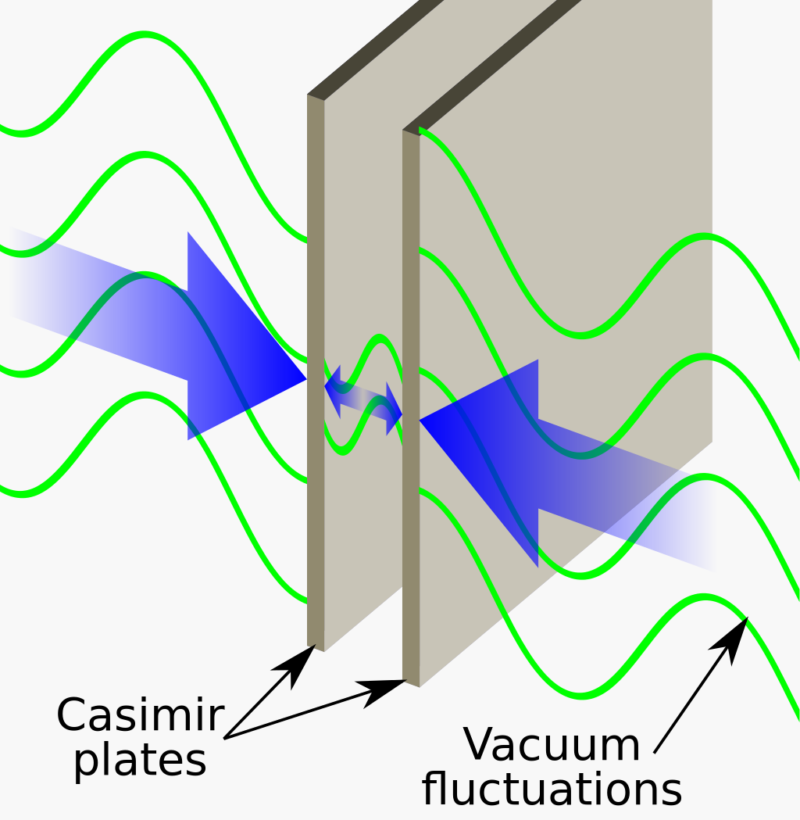Researchers balance Casimir effects, make tiny hoverboard

Enlarge (credit: Wikimedia Commons)
Empty space isn't actually empty. Even if you somehow managed to suck every single atom out of it, the Universe is filled with various fields that dictate the behavior of particles and forces. These fields even create pairs of "virtual particles" that pop into existence briefly before annihilating each other.
This counterintuitive view of the nature of the Universe is an outgrowth of quantum field theory, but it was difficult to figure out any obvious consequences. That changed in 1948, when Dutch physicist Hendrik Casimir figured out a specific situation where the contents of empty space matter. Now called the Casimir effect, it creates a tiny force when two conductive metal plates are placed in close proximity.
In a new paper published in today's edition of Science, researchers show that the Casimir effect can also be repulsive and use the balance between attractive and repulsive forces to cause a tiny flake of metal to levitate above a surface.
Read 8 remaining paragraphs | Comments